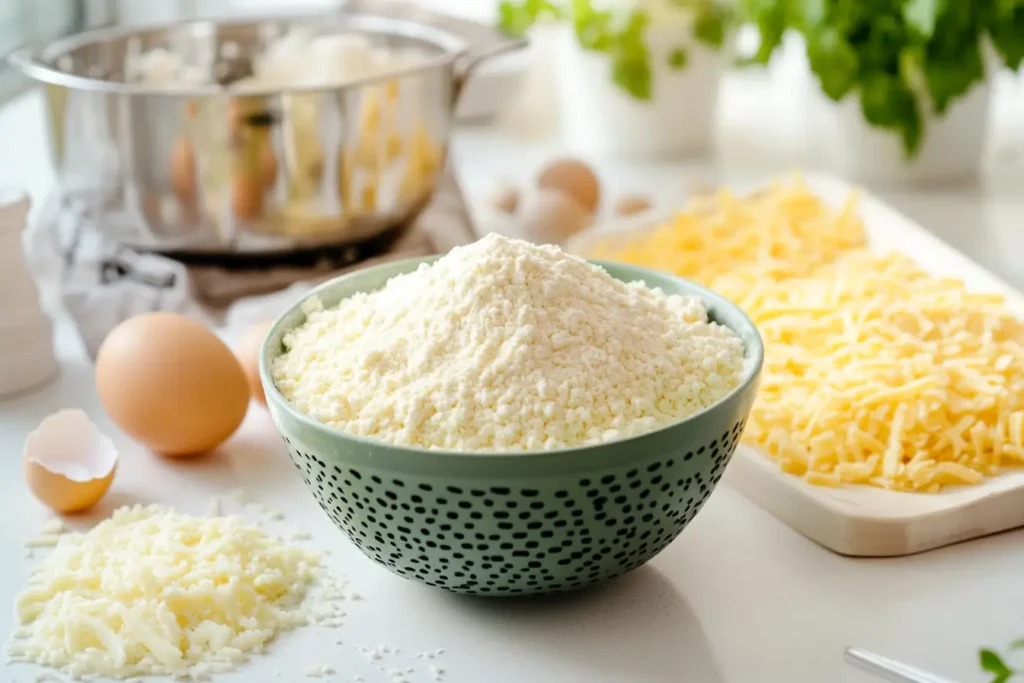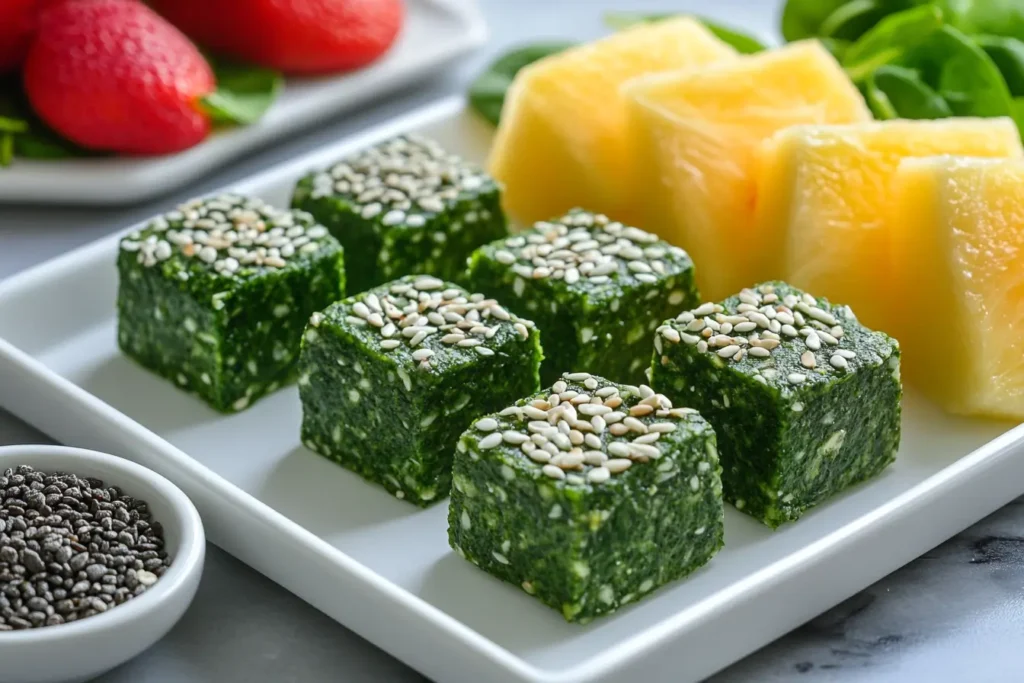
Pandebono is a popular Colombian snack known for its chewy texture and savory taste. Made primarily from yuca flour, cheese, and eggs, it’s a staple treat in many households and bakeries. Its unique combination of ingredients has sparked curiosity among health-conscious individuals. While pandebono is undoubtedly delicious, questions often arise about its nutritional value and how it fits into a balanced diet.
In this article, we’ll dive deep into the health aspects of pandebono. We’ll examine its ingredients, nutritional profile, potential benefits, and drawbacks. Additionally, you’ll discover tips to make this snack healthier without losing its traditional charm.
When enjoyed in moderation, pandebono can be part of a healthy lifestyle. Let’s explore its characteristics to answer the question: Is pandebono healthy?
What Is Pandebono?
Pandebono is a traditional Colombian bread made with a combination of cheese, yuca (cassava) flour, eggs, and sometimes cornmeal. This savory treat is cherished for its crisp exterior and soft, chewy interior. It is commonly enjoyed as a breakfast item or an afternoon snack alongside a cup of hot chocolate or coffee.
Ingredients of Pandebono
The unique texture and flavor of pandebono come from its simple yet distinctive ingredients. Let’s break them down:
- Yuca Flour (Cassava Flour): This gluten-free flour is derived from the root of the cassava plant. It contributes to the elasticity and chewiness of pandebono.
- Cheese: Often a salty, crumbly cheese like queso costeño or feta is used, giving the bread its signature tangy taste.
- Eggs: These provide structure and moisture to the dough, ensuring a rich, smooth texture.
- Cornmeal (Optional): Some recipes include cornmeal for added texture and flavor.
The Role of Cheese in Pandebono
Cheese is a defining feature of pandebono. It not only adds a salty flavor but also delivers a creamy richness that pairs well with the yuca flour. While cheese is an excellent source of calcium and protein, it can also be high in saturated fat and sodium. For those watching their salt or fat intake, using low-fat or reduced-sodium cheese can make pandebono a healthier option.
Yuca Flour: A Gluten-Free Option
Yuca flour is a favorite among those who follow a gluten-free diet. It is rich in carbohydrates, making it a great energy source. However, it lacks protein and fiber compared to whole-grain flours, which may make pandebono less filling. Pairing it with fiber-rich foods like a side salad or fruit can balance its nutritional profile.
Eggs in Pandebono
Eggs are a powerhouse ingredient in pandebono. They supply high-quality protein, vitamins like B12, and essential minerals such as selenium. However, excessive consumption of egg-based foods could contribute to cholesterol intake, which is a consideration for people with specific dietary restrictions.
Pandebono’s ingredients, when combined, create a flavorful and satisfying treat. But how do these ingredients stack up nutritionally? Let’s find out in the next section.

Nutritional Profile of Pandebono
Understanding the nutritional makeup of pandebono is key to evaluating its healthiness. This savory bread is a combination of macronutrients—carbohydrates, fats, and proteins—along with essential vitamins and minerals. Let’s take a closer look at what you’re consuming when you enjoy this treat.
Calorie Content: A Quick Overview
The calorie count of pandebono depends on its size and recipe variations. On average, a medium-sized pandebono contains approximately 120–150 calories.
- Why this matters:
While this calorie range is reasonable for a snack, consuming multiple pieces can quickly add up, especially if paired with calorie-dense beverages like hot chocolate.
Protein and Fat Balance
- Protein Content: Thanks to the cheese and eggs, pandebono provides a moderate amount of protein. Each serving has roughly 3–5 grams of protein, depending on the recipe.
- Protein supports muscle repair, growth, and overall satiety, making pandebono somewhat filling.
- Fat Content: The fat content primarily comes from the cheese and eggs. One pandebono contains about 5–7 grams of fat, which may include both saturated and unsaturated fats.
- Saturated fat warning: Excessive consumption of saturated fats can contribute to heart health concerns, so it’s best to enjoy pandebono in moderation.
Carbohydrates and Energy
Pandebono is carbohydrate-rich due to the yuca flour, which serves as its base ingredient. One serving has about 15–20 grams of carbohydrates.
- Energy boost: These carbs provide a quick energy source, making pandebono an excellent option for a mid-morning or afternoon pick-me-up.
- Low in fiber: Unlike whole-grain products, yuca flour lacks significant fiber content, meaning pandebono may not keep you full for extended periods.
Additional Nutrients
- Calcium: Thanks to the cheese, pandebono is a good source of calcium, promoting strong bones and teeth.
- Vitamin B12: The eggs contribute essential B vitamins, including B12, which supports red blood cell production and neurological health.
- Low fiber: One nutritional downside of pandebono is its low fiber content. Adding fiber-rich side dishes like fruit or vegetables can improve the overall meal quality.
In summary, pandebono offers a mix of nutrients that can fit into a balanced diet. However, portion control and mindful pairing with healthier foods are essential for maximizing its benefits while avoiding excessive calorie or fat intake.
Is Pandebono a Healthy Snack?
The healthiness of pandebono depends on individual dietary needs, portion sizes, and how it fits into your overall eating habits. While it has some positive nutritional aspects, there are also considerations to keep in mind.
Advantages of Eating Pandebono
- Rich in Energy:
The carbohydrates in yuca flour make pandebono an excellent source of quick energy, especially for those with active lifestyles. It can be a great pre-workout snack or a mid-morning energy boost. - Contains High-Quality Protein:
With ingredients like eggs and cheese, pandebono provides a decent amount of protein. This can help support muscle repair and keep you feeling full longer compared to snacks made solely of refined carbohydrates. - Naturally Gluten-Free:
For people with gluten sensitivity or celiac disease, pandebono is a safe and delicious bread alternative due to its base ingredient, yuca flour. - Cultural Significance:
Beyond its nutritional value, pandebono is a comfort food that holds cultural significance, fostering a sense of community and tradition. Eating it in moderation can provide not only nourishment but also emotional satisfaction.
Potential Downsides to Consider
- High Caloric Density:
While one serving may seem reasonable in calories, it’s easy to overindulge due to its small size and irresistible flavor. Eating two or three pandebonos can quickly escalate your caloric intake, especially if paired with high-calorie drinks. - Saturated Fat Content:
Cheese is a key ingredient, but it’s also a source of saturated fat. Consuming excessive amounts of saturated fat can increase the risk of heart-related issues over time. - Low Fiber Content:
Pandebono is made with refined yuca flour, which lacks fiber. Low-fiber foods can lead to quicker digestion and reduced satiety, leaving you feeling hungry sooner. - Salt Content:
Depending on the type of cheese used, pandebono can be high in sodium. Excessive sodium intake is linked to high blood pressure and other health concerns.
Moderation Is Key
The best way to enjoy pandebono is in moderation. One piece, paired with a nutrient-dense side like a salad or fresh fruit, can create a balanced snack.
Tips for Balance
- Pair wisely: Combine pandebono with a source of fiber or vitamins to balance your meal.
- Mindful eating: Savor each bite to enjoy the experience without overeating.
- Limit frequency: Save pandebono for occasional indulgences rather than a daily staple.
By understanding its strengths and limitations, pandebono can be a delightful addition to your diet without compromising your health goals.
How to Make Pandebono Healthier
For those who love pandebono but want to make it more aligned with health-conscious eating habits, there are several ways to tweak the recipe. These modifications can improve its nutritional value while keeping its signature flavor and texture intact.
Substituting Ingredients
- Low-Fat Cheese:
Swap regular cheese for a low-fat or reduced-sodium variety. This reduces the saturated fat and salt content without drastically altering the flavor. Options like part-skim mozzarella or reduced-fat feta work well. - Adding Whole-Grain Flour:
Incorporate a small amount of whole-grain flour (like oat or quinoa flour) with the yuca flour. This addition increases the fiber content, making pandebono more filling and improving digestion. - Egg Substitutes:
If you’re aiming to reduce cholesterol, consider using egg whites or plant-based egg substitutes. These alternatives maintain the bread’s structure with fewer calories and less fat. - Dairy-Free Alternatives:
For those who are lactose-intolerant or vegan, use plant-based cheeses made from almond, cashew, or coconut milk. These can mimic the flavor and texture of traditional cheeses.
Adjusting Portion Sizes
Portion control is a simple yet effective way to enjoy pandebono in a healthier way.
- Make Mini Pandebonos: Create smaller versions of the traditional bread to limit calorie intake while still satisfying cravings.
- Stick to One Serving: Resist the temptation to eat multiple pieces by preparing only what you need.
Adding Nutritious Ingredients
Enhance pandebono’s nutritional profile by incorporating nutrient-dense ingredients:
- Vegetable Additions: Mix finely chopped spinach, zucchini, or bell peppers into the dough for added vitamins and minerals.
- Seeds: Sprinkle chia seeds, flaxseeds, or sunflower seeds into the batter. These are rich in omega-3 fatty acids and fiber.
- Herbs and Spices: Add fresh herbs like parsley or cilantro and spices like turmeric for added flavor and health benefits without extra calories.
Baking Instead of Frying
While traditional pandebono is typically baked, some variations are fried for a crispier texture. To keep it healthier, always opt for baking. This method significantly reduces the fat content.
Balance It with Healthy Sides
Pair pandebono with:
- A fruit salad: Adds fiber and natural sweetness.
- A smoothie: Provides vitamins and hydration.
- A protein-packed dip: Like hummus or Greek yogurt-based sauces.
By making these adjustments, you can enjoy pandebono guilt-free, knowing it fits better into a nutritious diet.

Comparing Pandebono to Other Snacks
To fully evaluate how healthy pandebono is, it’s helpful to compare it to other popular snacks. This puts its nutritional value and benefits into perspective.
Pandebono vs. Chips
- Nutritional Differences:
- Pandebono: A single serving contains 120–150 calories with a balance of carbs, proteins, and fats.
- Chips: A serving of potato chips typically has around 150 calories but is primarily composed of fats and simple carbohydrates, with little to no protein.
- Healthier Choice:
Pandebono wins for being more balanced in macronutrients and less processed, making it a better option for sustained energy.
Bread vs. Pandebono
- Nutritional Differences:
- Pandebono: Made with gluten-free yuca flour, it contains slightly more calories due to the cheese and eggs but offers more protein and flavor.
- Bread: Whole-grain bread provides more fiber and a lower calorie count per serving but lacks the protein and fat richness of pandebono.
- Healthier Choice:
For those on a gluten-free diet, pandebono is an excellent option. However, for sustained satiety and lower calories, whole-grain bread is preferable.
Pandebono vs. Sweet Pastries
- Nutritional Differences:
- Pandebono: Has less sugar and fewer calories than sweet pastries like croissants or donuts, which are typically high in sugar and saturated fat.
- Sweet Pastries: Often contain 200–400 calories per serving, primarily from refined sugars and fats.
- Healthier Choice:
Pandebono is a better choice for anyone looking to reduce sugar intake while still enjoying a rich, satisfying snack.
FAQs
Is Pandebono Gluten-Free?
Yes, pandebono is naturally gluten-free because it’s made from yuca flour. This makes it an excellent option for individuals with gluten intolerance or celiac disease.
For more insight on how gluten-free options impact health, you can check out the article on “What is Pandebono Made Of?”.
Can I Eat Pandebono on a Diet?
Certainly, pandebono can be included in a balanced diet when consumed in moderation. Its high calorie and carb content suggest pairing it with fiber-rich or low-calorie sides to keep your meal nutritionally balanced.
Learn more about this delightful bread in “Indulge in Pandebono: The Heartwarming Taste of Colombia”.
How Many Calories Are in One Pandebono?
On average, a medium-sized pandebono contains about 120–150 calories. The actual count can vary based on the specific recipe and size. Always check the serving size to monitor your intake effectively.
Are There Vegan Options for Pandebono?
Yes, there are innovative vegan recipes for pandebono! These versions replace traditional cheese with plant-based alternatives and use flaxseeds or other egg substitutes, catering to those following a vegan diet.
To understand the differences in recipes and ingredients, visit “What is the Difference Between Pandebono and Almojabana?”.
Conclusion
Pandebono is a delicious and culturally significant snack with a lot to offer. Its balance of carbohydrates, protein, and fat makes it a reasonable choice when enjoyed in moderation. While it does have some nutritional drawbacks, such as its low fiber content and potential high fat or sodium levels, these can be mitigated by tweaking the recipe or pairing it with healthier sides.
When compared to other common snacks, pandebono often comes out ahead in terms of nutritional balance and minimal processing. Whether you stick to the traditional recipe or opt for a healthier version, pandebono can be part of a balanced and enjoyable diet.
